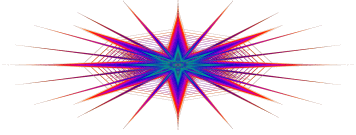 Rife Plasma System Components
Rife Plasma System Components Rife Plasma System Components
Rife Plasma System Components| Option Number | If your Signal source is from: | Then you need this: | Which will give you this output: | It will drive these Bill Cheb plasma tubes: |
| 1 | Virtually any signal source, including a Computer
Sound Card, CD or MP3 Player or any low-level sine wave audio signal, GB-4000, F125, F165, UDB1108S, Spooky2 or similar
frequency generator with a TTL output. | SPA4 integrated signal processor and amplifier, digital duty cycle meter type M1D, coupler type LC31. This is usually the best setup, because it will handle any type of plasma tube at any power up to 500 watts peak. | Up to 500 watts peak RF output. | 4 inch and 5 inch Phanotron, 8 inch Phanotron, SSQ-PT. SSQ-ST, SSQ-BAT, and others. |
| 2 | Computer
Sound Card, CD or MP3 Player or any low-level sine wave audio signal. |
SSQ-2F
v3.21, digital duty cycle meter type M1D, coupler type LC31. Good for portable or low power systems. |
Up to 70 peak watts RF output. | SSQ-PT or SSQ-ST (at low power), 4" and 5" Phanotron. |
| 3 | If
you add an optional PA1 amplifier to the above, then you will have - Option 1 does all this and more, and is on a single circuit board. |
Up to 500 peak watts RF output. | SSQ-ST, SSQ-BAT, 8" Phanotron. | |
| 4 | Computer Sound Card, CD or MP3 Player or any low-level sine wave audio signal. | SSQ-2F v1.41, analogue duty cycle meter type M1A, may be modified to accept digital duty cycle meter type M1D. | TTL or +12 V MOSFET Drive only. | None - low level output signal only. Used for laboratory research. |
| 5 | If you add an optional PA2 amplifier to the above, then you will have - | Up to 500 peak watts RF output. | SSQ-ST, SSQ-BAT, 8" Phanotron. | |
| 6 | GB-4000, F-165 or similar frequency generator in 3.1 MHz RF mode. | PA2
amplifier, coupler type LC31. Not recommended for new designs - use the PA3 instead. |
Up to 500 peak watts RF output. | SSQ-ST, SSQ-BAT, 8" Phanotron. |
| 7 | Computer with Spooky software and UDB1108S or Spooky2 frequency generator or similar frequency generator with a TTL output. | PA3
amplifier, coupler type LC31. Works well with the GB-4000 |
Up to 500 peak watts RF output. | SSQ-ST, SSQ-BAT, 8" Phanotron. |
| NOTE: Other equipment options exist. If you do not see a suitable selection in this chart, please contact us for suggestions for your particular use. | NOTE:
Options 3 and 5 produce the same results, but option 5 is more
expensive than option 3 if you only use a computer for your signal
source. If you have more than one type of frequency generator, you may wish to consider the SPA4 since it works with many other frequency generators. (See Option 1) |
NOTE: SSQ-ST and SSQ-BAT tubes require a pair of "E" series external electrodes for operation. All plasma tubes require an LC31 coupler. |
ABOUT PLASMA TUBESBill Cheb manufactures high quality plasma tubes, and we highly recommend his tubes for use with our equipment. Bill has designed his ST-series of plasma tubes to work reliably with our amplifiers. Bill manufactures both the popular internal electrode original-style Phanotron tubes in 4 inch, 5 inch, and 8 inch sizes, and a series of external electrode, straight plasma tubes in various sizes from 6 inches to 33 inches in length.
|
This web site and all contents including pictures, text and diagrams is Copyright © 2012 - 2018 by Ralph M Hartwell.